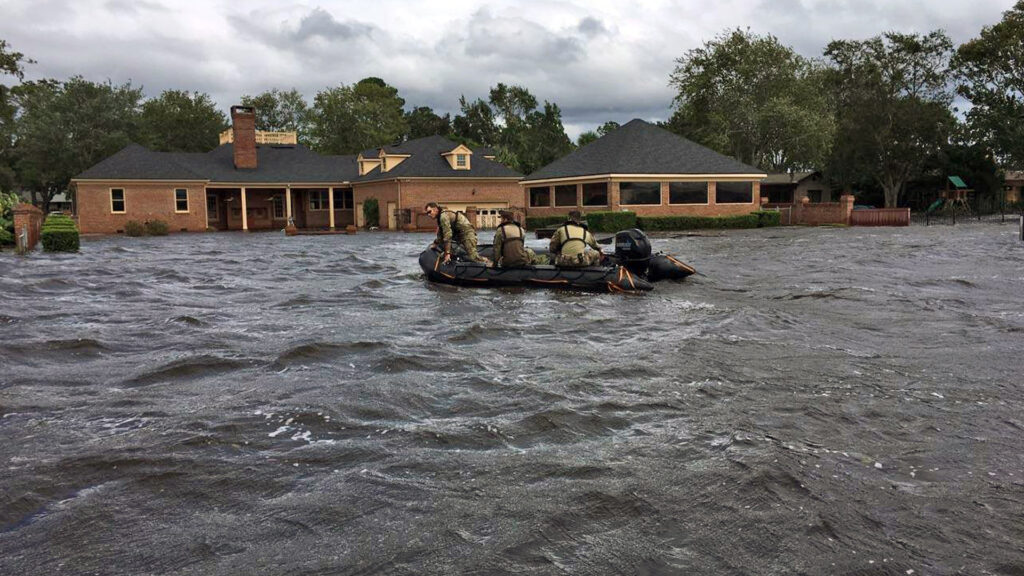By Jane Marsh, Environment.co
Over the last decade, sea-level rise and intensifying storms have indicated trouble for oceanfront properties in the United States. With Florida situated in the direct path of Atlantic hurricanes, the state maintains the highest flood risk among anywhere else.
What happens next is the question on everyone’s minds — especially as some Florida counties ramp up their resilience strategies while others lack them. Now, deciding to stay or leave could be a matter of life or death for residents.
Rising sea levels spell trouble for coastal communities

Scientists at the National Oceanic and Atmospheric Administration (NOAA) estimate sea levels will rise 10–12 inches from 2020 to 2050 — equivalent to the sea-level rise that happened over 100 years from 1920 to 2020.
According to a report last year from Climate Central, nearly 648,000 U.S. properties across 4.4 million acres will be at partial risk of flooding — and more than 48,000 of those could become entirely inundated.
In Florida, 130,000 parcels are at least partially vulnerable by mid-century, followed by Louisiana and Texas. Parts of the state have already shown signs of elevated flood risks. For example, 56% of Miami-Dade County is low-lying at only six feet or less above sea level.
Financial burdens of extreme flood events
As expenses and insurance claims mount, flood damages will become too costly for property owners and vulnerable cities.
At-risk populations — such as low-income households and minorities — will face the most danger. Often, these individuals cannot afford insurance or the necessary home upgrades to withstand storm damage.
In 2022, Hurricane Ian’s impacts on Florida amounted to nearly $47 billion in storm-related losses — the most expensive weather event since Hurricane Andrew in 1992. Yet, Climate Central predicts the financial burden of flooding will be even steeper by 2050.
More recently, California-based Farmers Insurance pulled out of Florida after being blindsided by the astronomical financial burdens of Hurricane Ian. Before the storm struck, the company sold 162,000 policies to homeowners in five years, which it began capping new policies in August 2022.
Should they stay, or should they go?
Despite the risks, 220,890 people moved to Florida between July 2020 and July 2021. However, many come to regret their decision. Affordability, low wages and weather are the primary factors making people leave.
According to Miami-based Realtor Michael Bordenaro, 40% to 50% of his buyers move out within a few years. Bordenaro says excessive heat, humidity and extreme weather conditions are highly unpredictable. In some instances, it leaves homes uninhabitable.
The Centers for Disease Control and Prevention (CDC) discovered mold in 46% of impacted homes following hurricanes Katrina and Rita in 2005. As more major insurance companies pull away from the state, Floridians and other coastal towns struggle to recoup their losses.

Of course, elsewhere along the U.S. coastline faces a similar fate as climate change, intensifying storms and floods ravage homes and businesses. Tulane University Associate Professor of Real Estate Jesse Keenan predicts a mass migration of 50 million Americans inland to avoid climate change impacts. Several will likely settle in parts of New England or the Upper Midwest.
Despite the risks, many people still flock to the coast instead of away from it. In 2017, 29.1% of Americans lived along coastlines — a 15.3% increase from 2000. The Gulf Coast alone added 8.3 million people during those seven years.
Florida’s future flood risks are high
At this rate, sea-level rise in Florida shows little sign of slowing down. Unfortunately, coastal flooding puts millions of people and their communities at risk of extreme financial burdens and property losses. Homeowners must weigh whether staying put or relocating to higher elevations is worth it.
Jane Marsh is an environmental journalist and the editor-in-chief of Environment.co.
If you are interested in submitting an opinion piece to The Invading Sea, email Editor Nathan Crabbe at ncrabbe@fau.edu. Sign up for The Invading Sea newsletter by visiting here.



